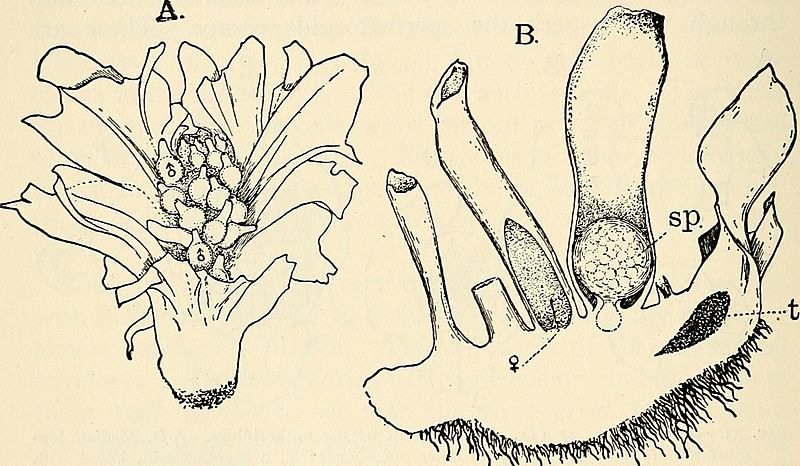Image: The structure and development of mosses and ferns (Archegoniatae) (1918) (14598320719)

Description: Identifier: structuredevelop00camp3 (find matches) Title: The structure and development of mosses and ferns (Archegoniatae) Year: 1918 (1910s) Authors: Campbell, Douglas Houghton, 1859-1953 Subjects: Publisher: New York, Macmillan Contributing Library: The LuEsther T Mertz Library, the New York Botanical Garden Digitizing Sponsor: The LuEsther T Mertz Library, the New York Botanical Garden View Book Page: Book Viewer About This Book: Catalog Entry View All Images: All Images From Book Click here to view book online to see this illustration in context in a browseable online version of this book. Text Appearing Before Image: ore or less conspicuous germ tube isfound at the end of which the young plant develops, one of theoctants of the original terminal group of cells becoming, appar-ently, the apical cell for the young plant. The latter rapidly grows in breadth and soon assumes all the characters of the6 §2 MOSSES AND FERNS CHAP. older plant. Leitgeb (Fig. 17, PI. IX.) shows a conditionthat looks as if at an earlier stage a two-sided apical cell hadbeen present, but he says nothing in regard to this. Thesexual organs appear while the plant is extremely small. Leit-geb says he observed the first indications of them on individ-uals only one millimetre in diameter, and before the first papil-late hair on the ventral surface had been formed. In the commonest Californian species, ^. cristatus thespores separate completely at maturity. The early stages ofgermination are like those in S. terrestris. There is usuallya two-sided apical cell at first, which later is replaced by thetype found in the adult thallus. Text Appearing After Image: ^^yi\wi^ Fig. 34.—Geoihallus tuberosus. A, Male plant, X15; B, section of female plant, X15; /. young tuber. Where there is an excess of moisture the thallus may be-come much larger than usual, this being especially noticeablein the male plants. There is often, under these conditions,a development of leaf-like marginal lobes. This excessivevegetative development of the thallus is accompanied by amarked diminution in the number of the sexual organs.(Campbell (17)). Geothallus. Evidently closely allied to Sphcerocarpus is a remarkableLiverwort, as yet found only near San Diego, in Southern Ill THE JUNGERMANNIALES 83 California (Campbell (18)). Geothallus tiiherosiis (Figs.34, 35), differs from Sphccrocarpus in its much larger size,the development of leaf-like organs, much like those of Fos-somhronia and by the very much larger size of the spores.There are also some minor differences in the structure of thereproductive organs, the antheridia having a more massivepedicel than that of Sp Note About Images Please note that these images are extracted from scanned page images that may have been digitally enhanced for readability - coloration and appearance of these illustrations may not perfectly resemble the original work.
Title: The structure and development of mosses and ferns (Archegoniatae) (1918) (14598320719)
Credit: https://www.flickr.com/photos/internetarchivebookimages/14598320719/ Source book page: https://archive.org/stream/structuredevelop00camp3/structuredevelop00camp3#page/n95/mode/1up
Author: Internet Archive Book Images
Permission: At the time of upload, the image license was automatically confirmed using the Flickr API. For more information see Flickr API detail.
Usage Terms: No known copyright restrictions
License: No restrictions
License Link: https://www.flickr.com/commons/usage/
Attribution Required?: No
Image usage
The following page links to this image:

